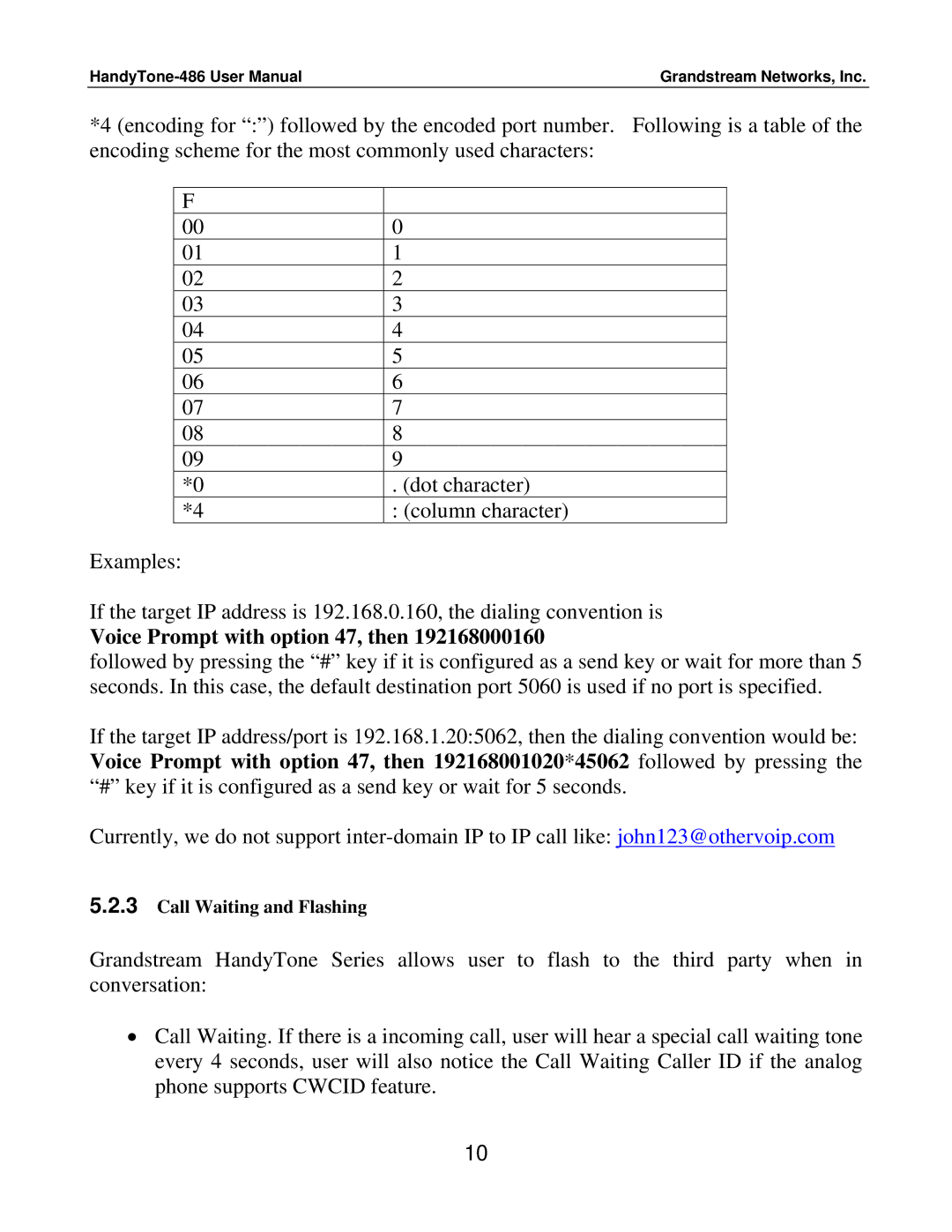
Grandstream Networks, Inc. |
*4 (encoding for “:”) followed by the encoded port number. Following is a table of the encoding scheme for the most commonly used characters:
F |
|
00 | 0 |
01 | 1 |
02 | 2 |
03 | 3 |
04 | 4 |
05 | 5 |
06 | 6 |
07 | 7 |
08 | 8 |
09 | 9 |
*0 | . (dot character) |
*4 | : (column character) |
Examples:
If the target IP address is 192.168.0.160, the dialing convention is
Voice Prompt with option 47, then 192168000160
followed by pressing the “#” key if it is configured as a send key or wait for more than 5 seconds. In this case, the default destination port 5060 is used if no port is specified.
If the target IP address/port is 192.168.1.20:5062, then the dialing convention would be: Voice Prompt with option 47, then 192168001020*45062 followed by pressing the “#” key if it is configured as a send key or wait for 5 seconds.
Currently, we do not support
5.2.3Call Waiting and Flashing
Grandstream HandyTone Series allows user to flash to the third party when in conversation:
•Call Waiting. If there is a incoming call, user will hear a special call waiting tone every 4 seconds, user will also notice the Call Waiting Caller ID if the analog phone supports CWCID feature.
10
